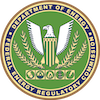Including the information identified below will provide a more complete application that will help staff expedite the licensing or exemption process by reducing or eliminating deficiencies or additional information requests.
Complete Consultation and Provide Study Results
- Complete first and second stage consultation, including audio recordings or transcripts, and letters received from the joint public meeting (4.38(b)).
- Complete all necessary studies and file the study report(s), including the results from all studies, with the application (4.38(c)).
Provide Documentation Indicating that the Project Qualifies for a 10-MW Exemption
- To qualify for a 10-MW exemption for a project with an existing dam, clearly show that a significant amount of the water power potential would be created by the dam.
- Clearly indicate the distance between the proposed powerhouse and the downstream face of the dam.
- Clearly indicate that there will be an increase in generation at the existing dam.
- If utilizing a natural water feature, clearly show the project uses a natural lake, waterfall, or the gradient of a natural stream, without the need for a dam or man- impoundment and that it does not retain water behind any structure for the purpose of a storage and release operation.
- Confer with Commission staff if you are unsure whether or not your proposed project qualifies for a 10-MW exemption.
Provide Documentation Indicating that the Project Qualifies for a Conduit Exemption
- Clearly show that the primary purpose of the conduit system is for municipal, agricultural, or industrial consumption and not for the production of hydropower.
- If you do not meet the discharge requirements in section (4.30(b)(28)(v) ), please explain where the water from your proposed project will discharge and explain why this discharge location serves your systems primary purpose of municipal, agricultural, or industrial consumption.
- Confer with Commission staff if you are unsure whether or not your proposed project qualifies for a conduit exemption.
Document and Provide Section 30(c) Fees of the Federal Power Act for Conduit or 10-MW Exemption Applications
- During the initial stage of pre-filing agency consultation under section (4.38(b)(1)), notify fish and wildlife agencies you are seeking an exemption (4.301(a)(2)).
- At the time of filing an exemption application include a copy of the most recent cost estimate provided by Fish and Wildlife agencies (4.302(a)) and a fee equal to at least 50 percent of the most recent cost estimate provided by the agencies to set terms and conditions under section 30(c) of the Federal Power Act (4.302(b)).
- If no cost estimates were provided, indicate so in your application.
Provide Documentation of Property Rights for Conduit or 10-MW Exemption Applications
- For an exemption application, include all documents that indicate you have all real property interests in non-federal lands necessary to develop and operate the project (i.e., deeds, leases, easements, right-of-ways) (4.31(c)). For properties with a parent company or subsidiary, the name on the property document must be the same name as the applicant.
Complete and Consistent Project Description
- Include a detailed description of all existing and proposed project facilities (i.e., dimensions and material composition) (4.61(c) or 4.107(c)).
- For a license or 10-MW exemption, include the transmission line to the interconnection with the regional distribution grid.
- Confirm that the project facilities described in Exhibit A (description of project and project operation) and shown on the Exhibit G project map are consistent (i.e., project dimensions).
Complete Exhibit E (Environmental Report)
- Provide a complete description of the local environment that may be affected by the project, including existing conditions.
- If you conclude that your project would have no effect on environmental resources, explain why, for each particular resource.
- If appropriate, include specific proposed measures for mitigating project effects.
- Provide dates for completing proposed construction activities.
Complete Exhibit F Drawings
- Include complete Exhibit F drawings (preliminary design drawings) that show and label all major existing and proposed project structures in sufficient detail to provide a full understanding of the project (4.41(g)).
- For a conduit exemption, the drawings should show any intake and discharge structures, the powerhouse, and the turbine generating units.
- For a license or 10-MW exemption, the drawings should show any dams, spillways, penstocks, powerhouses, tailraces or other structures proposed to be included as part of the project and the normal maximum water surface area and normal maximum water surface elevation (mean sea level), gross storage capacity of any impoundments to be included as part of the project.
- To document that your project qualifies for a 10-MW exemption, the drawings should also show the normal maximum impoundment water surface elevation at the dam, the normal maximum water surface elevation immediately downstream of the dam, and the normal maximum water surface elevation at the powerhouse tailrace.
- Make sure drawings are clearly legible.
Complete Exhibit G Maps
- Include Exhibit G project maps that show and label a project boundary line enclosing all existing and proposed project facilities.
- For a license or 10-MW exemption, you must include the impoundment up to the water surface elevation of the dam spillway crest or historic flashboards and the transmission line to the interconnection with the regional grid (4.41(h)).
- For a conduit exemption, you must include any intake and discharge structures, the turbine generating unit, and the powerhouse, a transmission line is not included within the project boundary.
- Include Exhibit G maps that are stamped by a registered land surveyor and include three known reference points (4.39(a) and 4.41(h)).
- Make sure maps are clearly legible.
- Please show and label all property ownership, for example:
- Federal lands (for a 10 MW exemption);
- Lands owned by the applicant by either deed, lease, easement, or right of way;
- Adjacent property ownership.
- Please label your property boundary.
Contact Information
-
VacantEnvironmental and Project Review Branch
